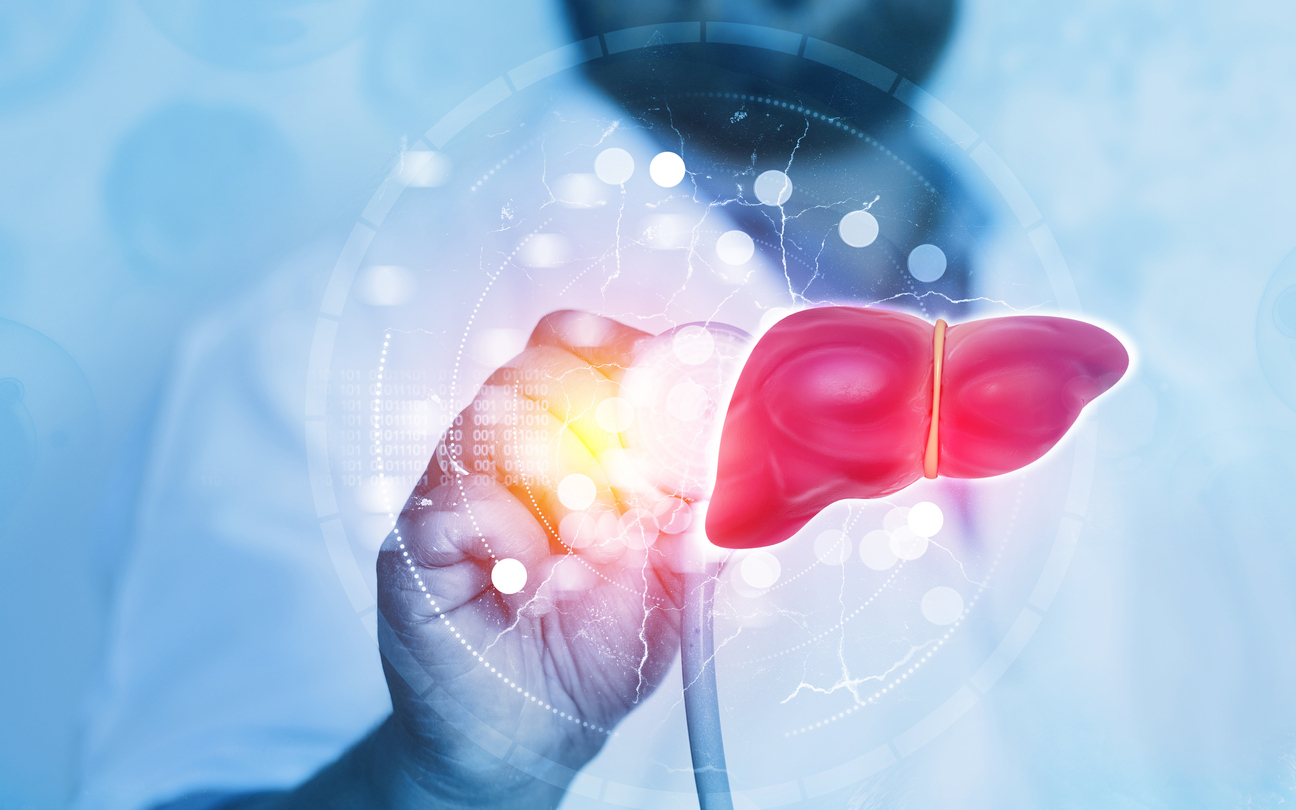If left untreated, Fatty Liver Disease (FLD) can progress to a point where it causes inflammation, scarring, or even cell death – a condition called steatohepatitis. Steatohepatitis can lead to liver fibrosis which diminishes blood flow throughout the affected organ and causes a buildup of scar tissue. In severe cases, FLD may result in cirrhosis, liver failure, or cancer.
To diagnose your condition, a gastroenterologist may conduct a physical exam and order blood tests to evaluate your liver function. Additional tests could include abdominal ultrasound, CT, or body MRI, to name a few. Treatment of FLD or liver fibrosis is based on the initial cause and usually works to prevent, slow down, or reverse the advancement of liver fibrosis. Our options include lifestyle changes, medication, cholesterol control, and diabetes management.
Diminished blood flow due to liver fibrosis reduces the liver’s ability to function correctly. Without treatment, the fibrosis may progress and cause cirrhosis of the liver, which could lead to organ failure or cancer.
What’s the difference between FLD and Liver Fibrosis?
Too much fat buildup in the liver causes a condition called steatosis, which is abnormal. A healthy liver contains some fat, but more than 5-6 percent is considered unhealthy. Fatty Liver Disease (FLD) describes when the liver becomes fatty due to this condition.
The two primary causes of FLD:
- Alcoholic fatty liver disease (AFLD) develops from drinking too much alcohol.
- Nonalcoholic fatty liver disease (NAFLD), which is the most widespread liver disease in countries like America, derives from poor metabolism and is often linked with obesity, high cholesterol, and diabetes.
FLD can also be caused by viral hepatitis, certain medications (such as steroids or chemotherapy), and pregnancy.
FLD progresses to a condition called steatohepatitis, when the liver’s fat cells begin to die, causing inflammation and scarring. If left unchecked, long-term steatohepatitis leads to liver fibrosis as more scar tissue forms and replaces healthy hepatic cells.
Diminished blood flow due to liver fibrosis reduces the liver’s ability to function correctly. Without treatment, the fibrosis may progress and cause cirrhosis of the liver, which could lead to organ failure or cancer.
Many patients with FLD and liver fibrosis do not realize they have liver disease because the symptoms are often vague, like mild fatigue or abdominal discomfort.
Common symptoms of liver disease progression include:
- weight or appetite loss
- fragility
- nausea
- jaundice
- swelling in legs and abdomen from fluid buildup
- confusion
What is the diagnosis of FLD & Liver Fibrosis?
To start, your doctor will ask about your medical history and current symptoms. You will also have a physical exam.
FLD and liver fibrosis may require blood tests for diagnosis, including those that assess ALT and AST levels. These enzymes increase when the liver is fatty.
Your doctor may also order imaging tests to get a better look at your liver, such as:
- Abdominal ultrasound is sound waves that produce pictures and evaluate the liver’s size, shape, and blood flow. On ultrasound images, steatotic livers look brighter than expected, and cirrhotic livers (advanced fibrosis) appear lumpy and shrunken.
- CT or Computed Tomography of the abdomen and pelvis is a medical procedure that x-rays different parts of your body to produce pictures of the inside of your body. Steatotic livers look darker than usual on CT images, while cirrhotic ones look shrunken and lumpy.
- MRI or Magnetic resonance imaging is a magnetic field using radio waves to produce pictures of the liver. It is more sensitive than other tests for steatosis, meaning it can detect small amounts of fat in the liver. MRIs are also used to calculate the fat percentage in the liver. More than 5-6% is considered abnormal.
- Ultrasound elastography is an ultrasound test used to assess liver fibrosis levels. The movement of the patient’s liver caused by an ultrasound wave is measured in the middle section of the organ, and then its stiffness (or elasticity) is calculated. Fibrotic livers are generally stiffer and move more than healthy livers in response to the waves.
- MRE, or MR elastography, is a unique MRI technique that diagnoses liver fibrosis. The movement of delicate vibration waves in the liver creates an elastogram visual map, which then shows the stiffness (or elasticity) across the entirety of the organ. MRE can detect increased Liver stiffness caused by fibrosis earlier than other imaging tests and may eliminate the need for an invasive liver biopsy altogether.
- A liver biopsy is a procedure that uses a needle to remove a small sample of your liver tissue. The doctors then examine the piece under a microscope for issues like steatosis (damage to your liver), fibrosis (scarring), or inflammation.
What is the treatment option for FLD & Liver Fibrosis?
The approach to managing FLD and liver fibrosis differs depending on the origin. Medical experts typically suggest treatment methods to prevent or stall the progression of fibrosis. With intervention, the advancement of liver disease might be decelerated and even reversed in some cases.
Therapies for NAFLD may include, but are not limited to:
- changes in your diet
- anti-inflammatory medications
- management of cholesterol and diabetes
- weight loss through exercise
- abstinence from alcohol
When to see a gastroenterologist for FLD?
If you experience the following risk factors or symptoms, it is essential to see your gastroenterologist and get tested- even if you don’t have symptoms or abnormal liver tests:
- Obesity/Overweight
- Diabetes
- High cholesterol
- Extreme alcohol consumption (FLD only)
Gastro Florida Can Help With FLD or Liver Fibrosis
At Gastro Florida, our specialists will be more than happy to book appointments for exams, diagnoses, and treatments according to your convenience. Maintaining gut health is essential, and we want to do everything in our power to help you achieve this goal by providing excellent service & support. Let’s get started on the road to recovery before there is any permanent damage!



 Close
Close